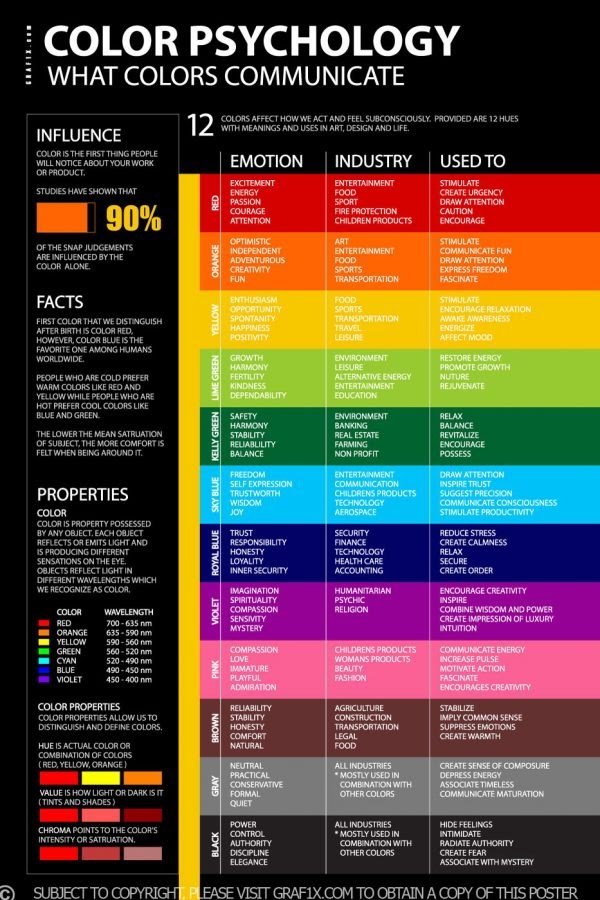As a formally-trained graphic designer with 10+ years of experience, it feels like I’ve been analyzing design forever. It is purely second nature and subconscious to me. It’s not uncommon to find me picking apart advertisements, judging font choices, and analyzing color theory.
This morning I found myself playing my latest addiction, this logo quiz app where you are given elements of a brand and have to guess what the logo is for. (All the words are removed, so you are looking at shapes, icons, and colors.) Some of them are so easy! Others are familiar but I can’t quite pin them, then there are some that completely baffle me and have never seen them in my life.
Naturally, the levels get harder as you go along. When I found myself struggling on one, I started thinking about the colors and shapes used, and what sort of brand/company it feels like. It was at that moment that I realized I am such a nerd.
Colors are fun, but they are also funny… A lot of people come to me when developing a brand and ask what specific colors communicate. Many people interpret colors in different ways. However, there some theories behind what certain colors make us feel. You may have seen some charts that show color psychology and what specific colors make you feel, like this poster below from graf1x.com.

Here’s a break down of colors and what they can evoke:
Black: Powerful, Elegance, Edgy
White: Clean, Virtuous
Pink: Feminine, Young, Innocent, Romance
Red: Passion, Aggression, Importance, Boldness
Orange: Playful, Fun, Optimism
Yellow: Happiness, Friendly, Eye-catching sometimes warning
Green: Natural, Eco, Healthy, Prosperous($$$)
Blue: Reliable, Inviting, Serene
Purple: Luxurious, Mysterious, Love
Brown: Earthy, Comfort, Rustic
Let’s dive a little deeper into how this relates to choosing your brand’s color.
While there are a lot of resources surrounding color psychology and the feelings colors evoke, I think it’s also important to understand that these are just guidelines.
For example, let’s take a look at pink. It’s a very controversial color as it evokes a very feminine and romantic feel. Without diving into a gender stereotype discussion, most of us can agree it’s commonly used in that way. While stereotypes are fading, it’s still so “typical” to connect pink with women, that there is even a brand called “PINK” targetted to young women. But here’s the thing… do you want to look like everyone else or do you want to stand out and be memorable?

T-Mobile and Lyft are very memorable brands for me because they are going against the grain and using a bright bold pink for their brand. This is a great branding move because it gives them instant recognition when they are running advertisements or other marketing. Going against the grain can work in your favor.
Another thing we run into a lot is the eco and financial communities using green. While green is significant in expressing growth and environmental initiatives, it can also be overused. Let’s take a look at the examples below:

Whole Foods is a great example of how green is used in a very obvious way. Green relates to many of the natural and organic foods sold there as well as tapping into their eco-initiatives. Another sample shown is just one of the many financial institutions that use green as a sign of money and prosperity.
I actually struggled to find some good examples of big brands using green that weren’t nature-related or money-based. That tells me that the market is saturated in green! Android and Spotify are both unexpected because they aren’t being cliche in their use of green in their brand colors and chose them for other reasons.
In conclusion, I guess what I’m trying to say is when you’re developing your brand you want to think about color more than what emotion it will evoke. Don’t default to a color just because. I want you to be more intentional about your decision. A lot of times the feelings that you want to communicate are bigger than just your choice of color. It comes down to the tints and hues of the colors you choose (and don’t forget the colors you paired with!), the imagery you use, and the way you communicate.
What are your thoughts on choosing colors? Are you the type of person who wants to stick with color psychology? Or are you ready to break away from the norm and stand out?
0 Comments